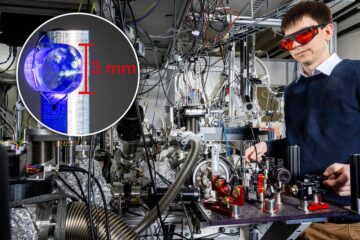Compounds regulating the ThiM riboswitch – New Compounds and their use as antibiotics

Since the discovery of antibiotic substances and their use against microbes, bacteria have evolved to defend themselves by acquiring resistances. Especially in hospitals where bacteria are exposed to a wide array of antibacterial substances, multiresistant strains (e.g. MRSA) arose.
This is why it is not only necessary to have an ongoing search for new antibiotic substances, but to also find and use new antibacterial targets implementing new mechanisms of action. New antibacterial targets are constituted by the lately discovered riboswitches. Riboswitches are mostly found in the 5'-untranslated region of bacterial mRNA and regulate 2 4% of all bacterial genes. In the past it has been shown that metabolite analogues can be employed to trigger riboswitch function thereby modulating its regulatory character. Thus, it would be desirable to provide compounds that also target the thi-box riboswitch and exhibit antimicrobial activity. In H. influenza and other pathogenic bacteria the thi-box riboswitch has been shown to be involved in the regulation of essential genes. The activation of the thi-box riboswitch is triggered by binding to the metabolite thiamine pyrophosphate (TPP). Analogues like pyrithiamine have also been shown to act on thi-box riboswitches and, due to this, influence bacterial growth. Beneficially, screening revealed several compounds which down regulate the expression level of β-galactosidase in response to activation of the thi-box riboswitch more efficiently than pyrithiamine. This indicates that compounds according to the invention can be useful as antibacterial substances and provide a novel approach to the treatment of bacterial infection.
Weitere Informationen: PDF
PROvendis GmbH
Tel.: +49 (0)208/94105 10
Ansprechpartner
Dipl.-Ing. Alfred Schillert
Media Contact
Alle Nachrichten aus der Kategorie: Technologieangebote
Neueste Beiträge

Atomkern mit Laserlicht angeregt
Dieser lange erhoffte Durchbruch ermöglicht neuartige Atomuhren und öffnet die Tür zur Beantwortung fundamentaler Fragen der Physik. Forschenden ist ein herausragender Quantensprung gelungen – sprichwörtlich und ganz real: Nach jahrzehntelanger…

Wie das Immunsystem von harmlosen Partikeln lernt
Unsere Lunge ist täglich den unterschiedlichsten Partikeln ausgesetzt – ungefährlichen genauso wie krankmachenden. Mit jedem Erreger passt das Immunsystem seine Antwort an. Selbst harmlose Partikel tragen dazu bei, die Immunantwort…

Forschende nutzen ChatGPT für Choreographien mit Flugrobotern
Robotik und ChatGPT miteinander verbinden… Prof. Angela Schoellig von der Technischen Universität München (TUM) hat gezeigt, dass Large Language Models in der Robotik sicher eingesetzt werden können. ChatGPT entwickelt Choreographien…

















